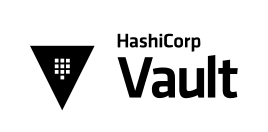Tag: Password
It can sometimes be hard to keep track of the many passwords that your server requires. In our password section, you'll find many tutorials designed to aid in your in your password search.
Top 10 Password Security Standards
Since ancient times, people have used passwords, which are almost ubiquitous in our personal and professional lives. Though people were expected to remember their passwords as a best practice, it is practically impossible to remember hundreds of complex passwords. Therefore, people created passwords that were easy to remember and reuse across numerous accounts. However, repeated use of the same weak passwords causes data breaches and security issues.
Top 10 Web Server Security Best Practices
How Can You Ensure Security on a Server?
It is important to secure your server to prevent data loss or security compromises. Because security is such a challenging subject for many, it often goes unheeded. Many are caught unaware when an issue arises. By following these best practices, you can significantly lower your risk of being compromised by a malicious actor.
Data security is essential to developers, business owners, and system administrators. A vital element of securing data is password management. This guide will teach you how to change a MySQL password in Linux using the command line.
How to Password Protect a Directory in cPanel
II. How to Create an Email Account in cPanel
III. How to Set Your Default Address in cPanel
IV. How to Set Up an Autoresponder in cPanel
V. How to Set Up Email Forwarding in cPanel
VI. How to Set Up Email Filters in cPanel
VII. How to Enable Spam Protection in cPanel
VIII. How to Add an MX Entry in cPanel
IX. How to Use Webmail From Within cPanel
X. How to Change Your cPanel Password
XI. How to Update Your Contact Information in cPanel
XII. How to Change Your cPanel Theme
XIII. How to Change the Primary Language in cPanel
XIV. How to Add a Record With the DNS Zone Editor in cPanel
XV. How to Backup Your Website in cPanel
XVI. How to Use the Disk Space Usage Tool in cPanel
XVII. How to Create Additional FTP Accounts in cPanel
XVIII. How to Password Protect a Directory in cPanel
XIX. How to Use the IP Blocker in cPanel
XX. How To Set up Hotlink Protection in cPanel
XXI. How to Create a Subdomain in cPanel
XXII. How to Create an Addon Domain in cPanel
XXIII. How to Create a Domain Alias in cPanel
XXIV. How to Set up Domain Redirects in cPanel
XXV. How to Create a MySQL Database in cPanel
XXVI. How to Use the Index Manager in cPanel
XXVII. How to Create Custom Error Pages in cPanel
XXVIII. How to Set Up a Cron Job in cPanel
It is well known that website security is crucial. Securing the files behind the site is even more important. Even if your server security fails you and someone accesses your server, knowing how to password protect a directory in cPanel adds another level of security.
Alert Logic Security and Compliance Suite
Introduction
Intrusion detection systems (IDSs) are an ever-present requirement in a cybersecurity infrastructure to ensure a server or internal network is protected. An intrusion detection system is either a hardware device or software program that actively monitors a server or group of servers for network policy violations or malicious activity. Any suspicious activity, attempted attack, or policy violation is reported and logged to a centrally located security information and event management (SIEM) system database, or directly to a security administrator for further review. This article explores Liquid Web’s intrusion detection product called Alert Logic Security and Compliance Suite.
How To Set up and Use Active Directory

Introduction
This article will discuss the importance of Active Directory (AD), along with what it is, what it does, installation, and configuration. We must state in advance that there have been entire books written about AD. While we will touch on the significant aspects of its functionality, more in-depth information can be found online.
Guide to Installing and Configuring Vault

What is Vault?
Vault protects and secures access to multiple types of confidential data. It stores and manages sensitive password information, API keys, and access tokens that exist in a low trust environment and generates dynamic access to authenticate users to ensure they have authorized ingress and availability to a file, location, service, or application.
Fully Managed Cloud App Infrastructure Protection (AIP) (formerly Threat Stack)
Introduction
This article will review some of the more technical aspects of F5 Distributed Cloud AIP. F5 Distributed Cloud AIP is a platform-independent intrusion detection system (IDS) designed to provide users with a unique view into various integrated server security functions. It monitors both Linux and Windows servers as well as Kubernetes or other container-based server infrastructures to observe behaviors and detect malicious, uncommon, and risky activity.
What is SIEM?

Security Information and Event Management (or SIEM) is a subset of the computer security field, where applications and services join forces with security event management and security information management. When united, these disciplines provide significantly improved real-time statistical data and threat analysis of alerts generated by the related applications. The 2021 Internet Security Threat Report from Sophos denotes that are not only the number of attacks on the rise but also the diverse nature of methodologies and vectors of incursions used. This necessitates the fact that adding a SIEM is especially warranted at this time.
How to Install an SSL on a Core/Unmanaged Ubuntu Server
Why do I Need to Install or Reinstall My SSL Certificate?
According to Globalsign;
Our Sales and Support teams are available 24 hours by phone or e-mail to assist.

